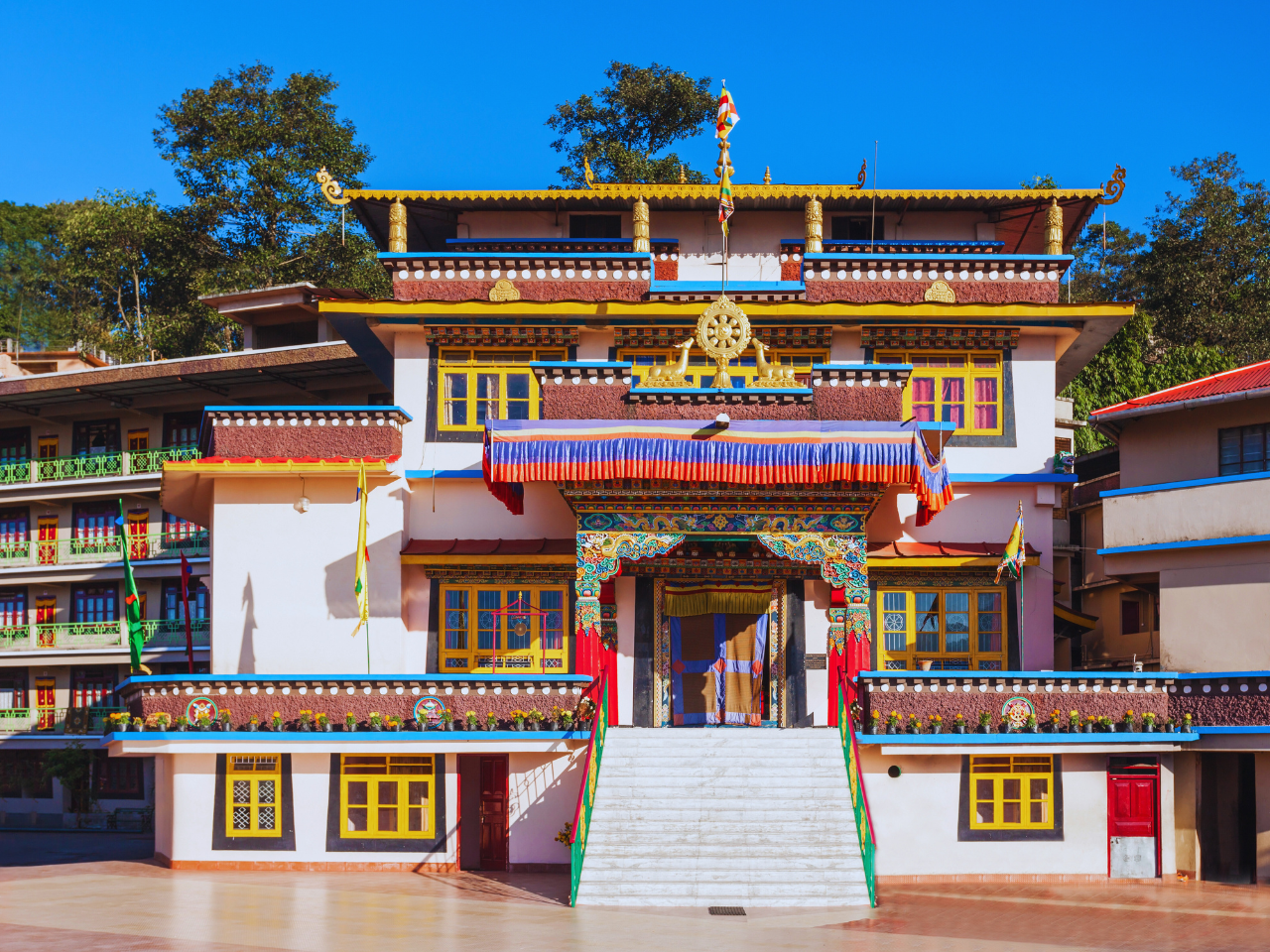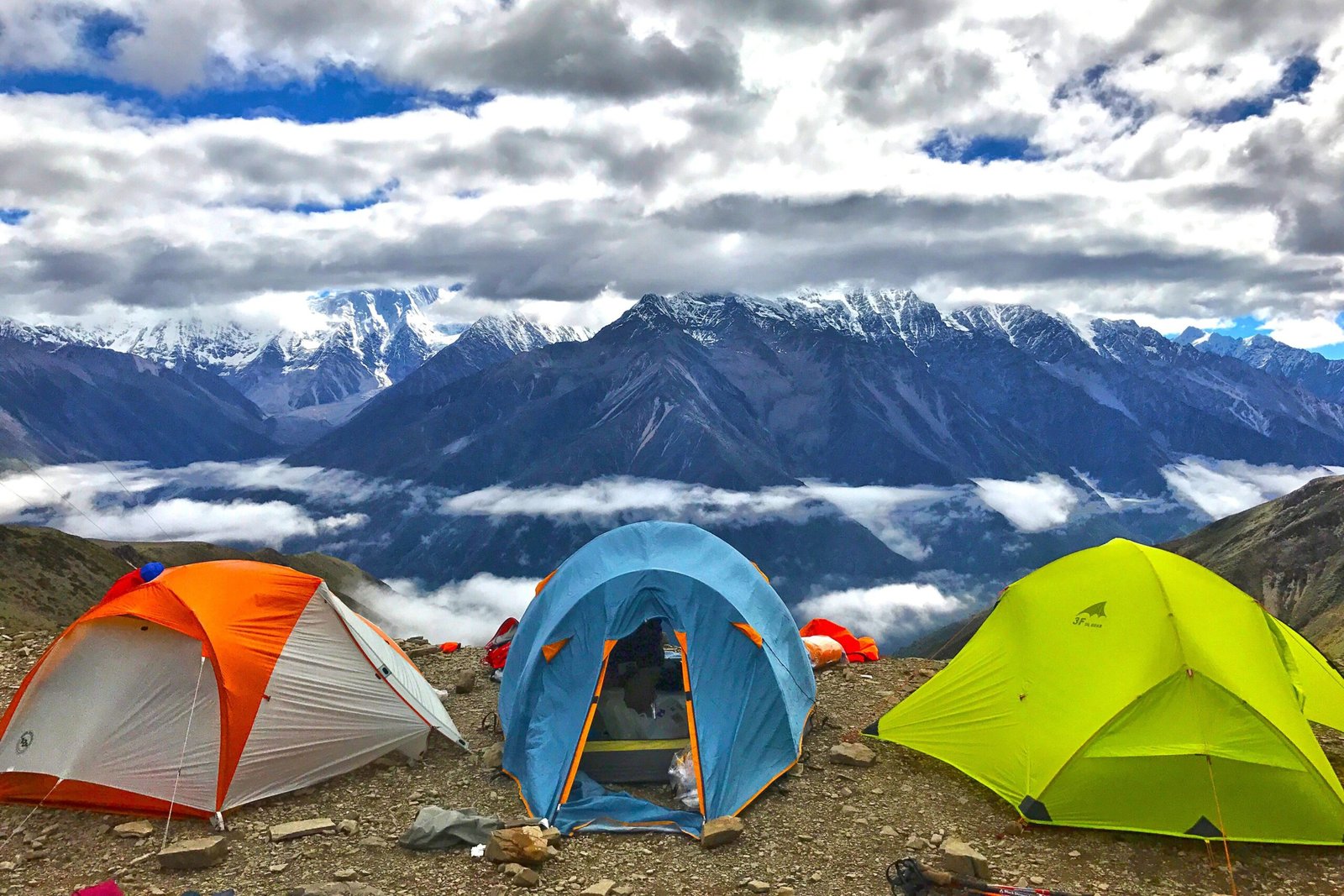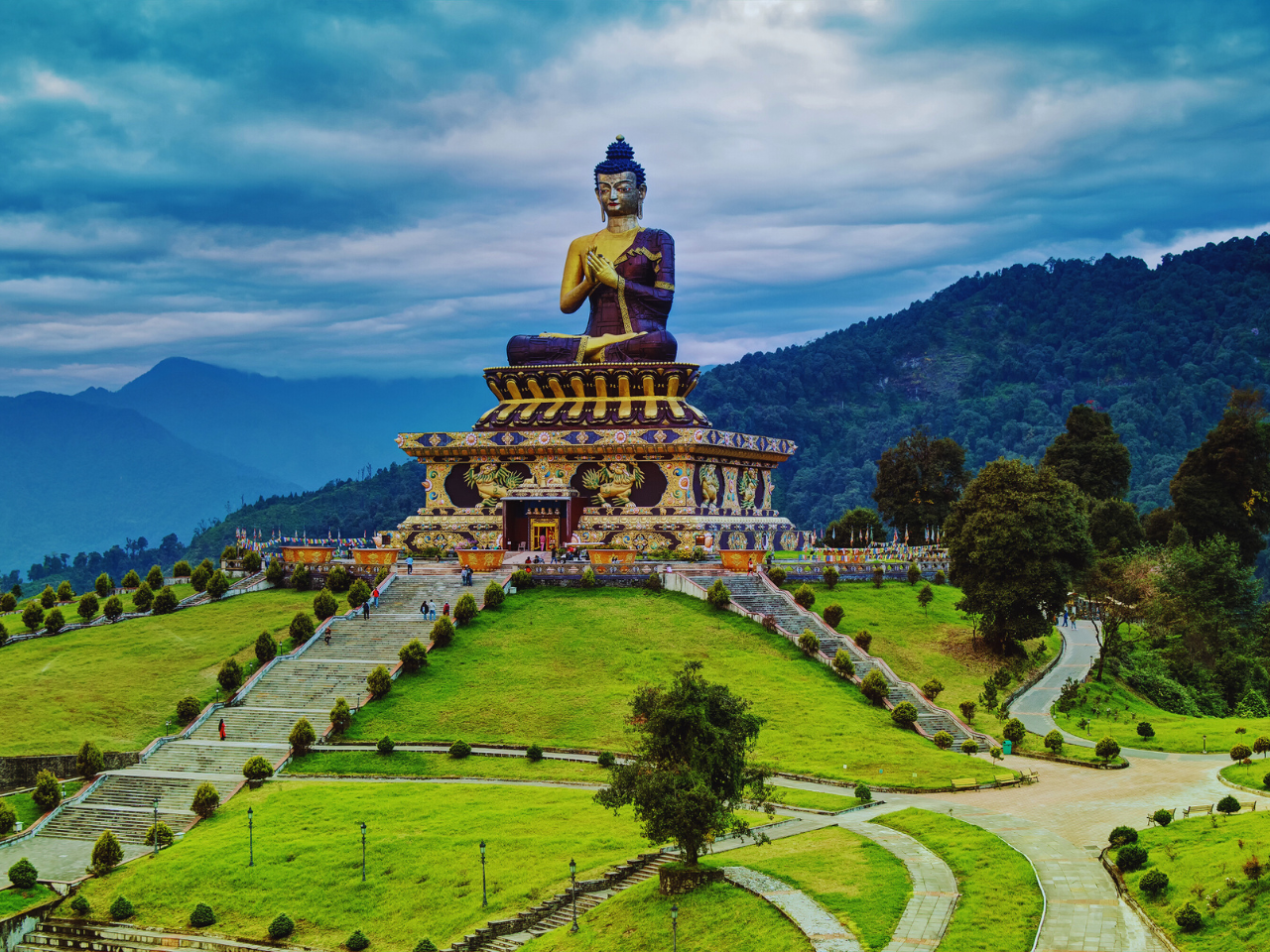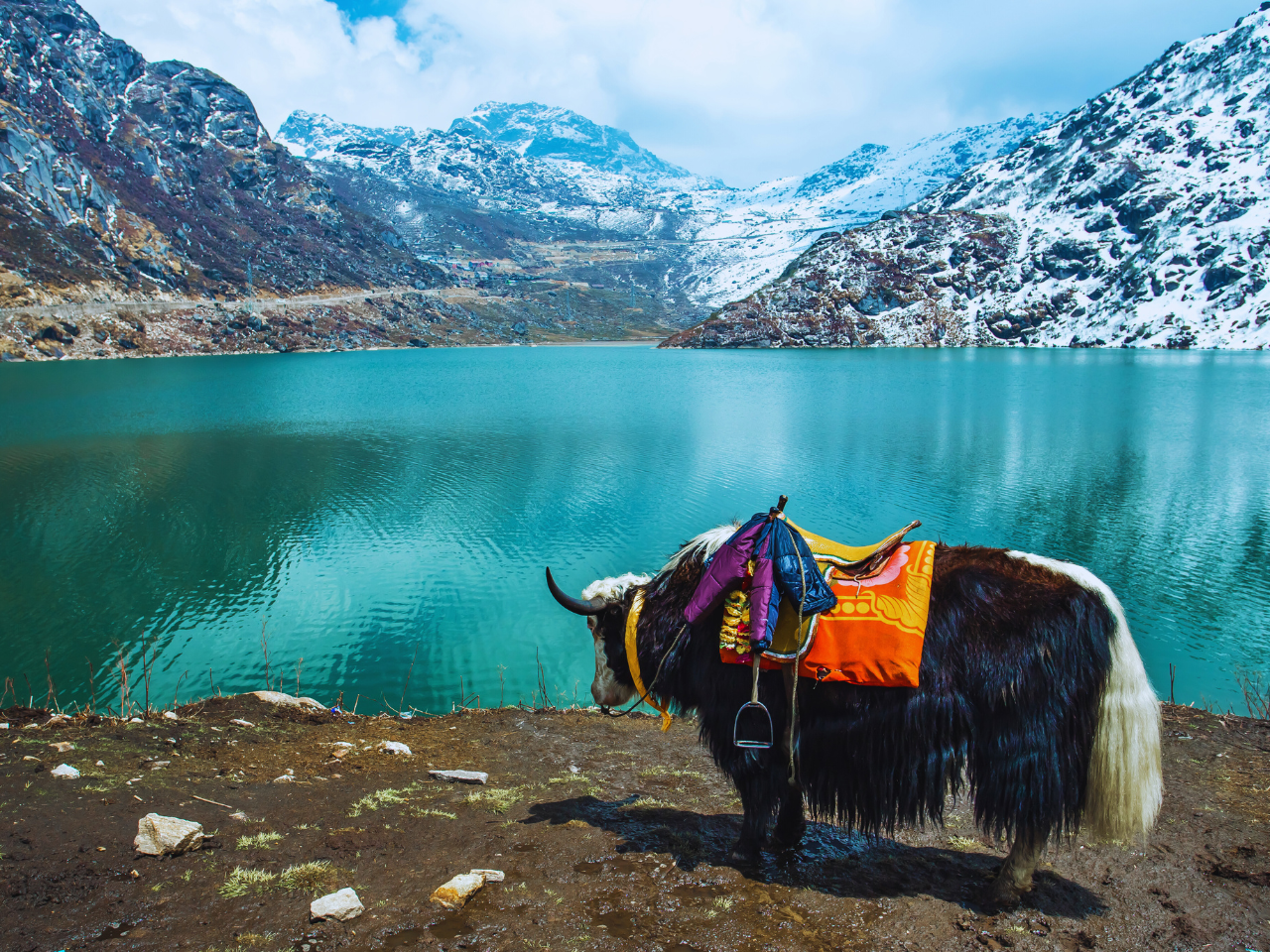Sikkim Tourist Places
Sikkim Famous Tourist Attractions
Sikkim is a small state in India, located in the eastern Himalayas. It’s a beautiful place with stunning views, colorful culture, and peaceful monasteries. Whether you love adventure, nature, or spirituality, Sikkim has something for you. Here’s a helpful guide to explore the Sikkim famous tourist attractions
Top Attractions in Sikkim
1. Gangtok
The capital city, Gangtok, is a bustling town with stunning views of the Kanchenjunga mountain range. It serves as the perfect base for exploring the rest of the state.
Key Attractions
- MG Marg: The heart of Gangtok, MG Marg is a pedestrian-only zone perfect for shopping and dining. Lined with cafes, restaurants, and shops, it offers a lively atmosphere. It’s a great place to relax, enjoy local food, and buy souvenirs.
- Enchey Monastery: A peaceful monastery with beautiful architecture, Enchey Monastery is about 200 years old and is an important seat of the Nyingma order of Tibetan Buddhism. The monastery offers a serene environment and panoramic views of the surrounding hills.
- Tsomgo Lake: A glacial lake located at an altitude of 12,400 feet, Tsomgo Lake is often surrounded by snow. It is about 40 km from Gangtok and is accessible by road. The lake’s pristine waters and the surrounding snowy landscape make it a must-visit.
- Ganesh Tok: A small temple dedicated to Lord Ganesha, Ganesh Tok offers stunning views of Gangtok and the surrounding mountains. It’s located at a height of 6,500 feet and is a popular spot for tourists.
- Hanuman Tok: Another temple with breathtaking views, Hanuman Tok is dedicated to Lord Hanuman. It’s located at an altitude of 7,200 feet and provides a panoramic view of the Kanchenjunga range.
2. Nathula Pass
Located on the Indo-China border, Nathula Pass is a high-altitude pass offering breathtaking views and a peek into the history of the Silk Route. It is one of the highest motorable roads in the world and is open to Indian nationals only on certain days of the week.
Key Attractions
- Border Gates: The actual Indo-China border where one can see the soldiers of both nations guarding the border.
- War Memorial: A tribute to the soldiers who lost their lives in the Indo-China war.
- Baba Harbhajan Singh Temple: A shrine dedicated to a soldier who is believed to have supernatural powers and protects the soldiers at the border.
3. Pelling
Known for its stunning views of the Kanchenjunga, Pelling is a quaint town that offers a perfect blend of nature and culture.
Key Attractions
- Pemayangtse Monastery: One of the oldest and most significant monasteries in Sikkim, Pemayangtse Monastery is located at a height of 7,000 feet. It is an important center for the Nyingma sect of Tibetan Buddhism.
- Rabdentse Ruins: The ancient ruins of the second capital of Sikkim, Rabdentse, offer a glimpse into the rich history of the region. The ruins are surrounded by dense forests and offer panoramic views of the Kanchenjunga range.
- Sanga Choeling Monastery: Another historic monastery, Sanga Choeling Monastery, is located on a ridge and offers stunning views of the mountains and the valley below.
- Khecheopalri Lake: A sacred lake for both Buddhists and Hindus, Khecheopalri Lake is believed to fulfill wishes. The lake is surrounded by dense forests and is home to many species of birds.
4. Lachung, Lachen, and Yumthang Valley
These northern regions of Sikkim are known for their stunning landscapes, vibrant culture, and friendly locals. Lachung and Lachen serve as bases for exploring the beautiful Yumthang Valley and the high-altitude Gurudongmar Lake.
Key Attractions
- Yumthang Valley: Also known as the Valley of Flowers, Yumthang Valley is a paradise for nature lovers. The valley is home to a variety of flora and fauna, including rhododendrons, primulas, and yaks. The best time to visit is from April to June when the flowers are in full bloom.
- Gurudongmar Lake: One of the highest lakes in the world, Gurudongmar Lake is situated at an altitude of 17,800 feet. The lake is sacred to both Buddhists and Sikhs and is believed to have healing powers.
- Lachung Monastery: Located in the picturesque village of Lachung, the monastery is an important center of Tibetan Buddhism and offers beautiful views of the surrounding mountains.
- Lachen Monastery: Another important monastery in the region, Lachen Monastery, is located in the village of Lachen and offers a serene environment and stunning views.
5. Zuluk
A small village on the historic Silk Route, Zuluk offers stunning views of the Himalayas and a series of winding roads known as the Zuluk loops. It is a great destination for those looking for offbeat travel experiences.
Key Attractions
- Thambi View Point: Offers panoramic views of the Kanchenjunga range and the winding Zuluk loops.
- Lungthung: A small settlement located at an altitude of 11,500 feet, Lungthung offers breathtaking views of the Himalayas and is a great spot for bird watching.
- Kupup Lake: Also known as Elephant Lake due to its shape, Kupup Lake is a high-altitude lake located near the Indo-China border.
6. Ravangla
A quaint town known for its tranquility and the beautiful Buddha Park, Ravangla is a great place to unwind and enjoy the natural beauty of Sikkim.
Key Attractions
- Buddha Park: The main attraction of Ravangla, Buddha Park, houses a 130-foot tall statue of Lord Buddha. The park offers a peaceful environment and stunning views of the surrounding mountains.
- Ralang Monastery: One of the most important monasteries in Sikkim, Ralang Monastery, is located near Ravangla and is known for its beautiful architecture and serene environment.
- Temi Tea Garden: The only tea garden in Sikkim, Temi Tea Garden, is located near Ravangla and offers stunning views of the surrounding hills and valleys. Visitors can take a tour of the tea garden and learn about the tea-making process.
7. Namchi
Namchi, meaning “Sky High,” is a town known for its giant statues and beautiful monasteries. It offers a unique blend of culture, spirituality, and natural beauty.
Key Attractions
- Statue of Guru Padmasambhava: Located on Samdruptse Hill, the 135-foot tall statue of Guru Padmasambhava is the tallest statue of the revered Buddhist saint in the world. The hill offers panoramic views of the surrounding mountains and valleys.
- Siddhesvara Dham: A unique pilgrimage site, Siddhesvara Dham houses replicas of the four Dhams of India and a 108-foot tall statue of Lord Shiva. The complex also includes replicas of the twelve Jyotirlingas.
- Namchi Monastery: One of the oldest monasteries in Sikkim, Namchi Monastery offers a serene environment and stunning views of the surrounding hills.
Best Season to Visit Sikkim
The best time to visit Sikkim is from March to May and from October to December. During these months, the weather is pleasant, and the skies are clear, offering stunning views of the mountains.
Spring (March to May)
Temperature
- Daytime: 10°C to 25°C
- Nighttime: 5°C to 15°C
Activities
- Sightseeing: The blooming rhododendrons and other flowers make this a great time for sightseeing and enjoying the natural beauty of Sikkim.
- Trekking: The weather is perfect for trekking, and the clear skies offer stunning views of the mountains.
- Festivals: The Pang Lhabsol festival, which celebrates the guardian deity of Sikkim, is held in this season.
Autumn (October to December)
Temperature
- Daytime: 5°C to 15°C
- Nighttime: 0°C to 10°C
Activities
- Clear Views: The post-monsoon season offers the clearest views of the Himalayas.
- Monastery Visits: The pleasant weather is perfect for visiting the many monasteries in Sikkim.
- Festivals: Diwali, Lhabab Duchen, and the Sikkim International Flower Festival are some of the major festivals celebrated during this season.
Travel Tips
Permits
- Inner Line Permit (ILP): Foreign nationals need to obtain an Inner Line Permit (ILP) to enter Sikkim. The ILP can be obtained from Sikkim Tourism offices in New Delhi, Kolkata, Siliguri, and Rangpo.
- Protected Area Permits (PAP): Certain areas like Nathula Pass, Yumthang Valley, and Gurudongmar Lake require additional permits. These can be obtained through registered tour operators.
Altitude Sickness
- Acclimatization: Give your body time to adjust to higher altitudes, especially if you are visiting places like Nathula Pass, Gurudongmar Lake, or Zuluk.
- Stay Hydrated: Drink plenty of water to stay hydrated, as high altitudes can cause dehydration.
- Avoid Alcohol: Refrain from consuming alcohol, as it can exacerbate symptoms of altitude sickness.
- Medications: Carry medications for altitude sickness and consult your doctor before the trip.
Clothing
- Layering: The weather in Sikkim can be unpredictable, so it’s best to dress in layers. This way, you can add or remove clothing as needed.
- Warm Clothes: Pack warm clothing, especially if you’re visiting high-altitude regions. Include thermal wear, woolen sweaters, and jackets.
- Rain Gear: If you’re visiting during the monsoon season (June to September), pack a raincoat or umbrella.
Transportation
- Shared Taxis: Shared taxis are the most common mode of transport for local travel. They are cost-effective but can be crowded.
- Private Taxis: For more comfort and flexibility, consider hiring a private taxi. This is especially useful for visiting remote areas.
- Public Transport: Public buses are available but may not be as frequent or comfortable as taxis.
Food and Drink
- Local Cuisine: Try local delicacies like momos (dumplings), thukpa (noodle soup), and gundruk (fermented leafy green vegetable).
- Safe Drinking Water: Stick to bottled or boiled water to avoid waterborne diseases.
Famous Activities in Sikkim
1. Trekking
Sikkim offers some of the best trekking routes in the Himalayas, ranging from easy to challenging.
Goecha La Trek
- Overview: This trek offers stunning views of Kanchenjunga, the third-highest mountain in the world. It’s a challenging trek that takes you through lush forests, alpine meadows, and high-altitude passes.
- Duration: 8-10 days
- Best Time: April to June and September to November
Dzongri Trek
- Overview: A shorter trek compared to Goecha La, Dzongri Trek is ideal for those who want to experience the beauty of the Himalayas without the extended duration. The trek offers panoramic views of the Kanchenjunga range.
- Duration: 5-6 days
- Best Time: April to June and September to November
2. River Rafting
The Teesta and Rangit rivers offer exciting opportunities for river rafting.
Teesta River
- Overview: Known for its turbulent waters, Teesta River is perfect for both beginners and experienced rafters. The river has rapids ranging from grade II to IV.
- Best Time: March to May and October to December
Rangit River
- Overview: A tributary of the Teesta River, Rangit River offers challenging rapids and stunning scenery. It’s ideal for experienced rafters.
- Best Time: March to May and October to December
3. Paragliding
Gangtok and its surrounding areas provide excellent spots for paragliding, offering panoramic views of the mountains.
Overview
- Locations: Gangtok, Tashi View Point, and Pangthang
- Best Time: March to June and September to November
4. Ropeway Ride
Gangtok Ropeway
- Overview: The Gangtok Ropeway offers a thrilling ride with panoramic views of the city and the surrounding mountains. It runs from Deorali Bazaar to Tashiling Secretariat and provides a bird’s eye view of the beautiful landscape.
- Duration: Approximately 15-20 minutes for a round trip
- Best Time: All year round
5. Cultural Tours
Explore the rich cultural heritage of Sikkim by visiting monasteries, attending local festivals, and interacting with the warm and welcoming locals.
Monastery Tours
- Rumtek Monastery: One of the largest and most significant monasteries in Sikkim, Rumtek Monastery is located near Gangtok. It’s the seat of the Karmapa, the head of the Karma Kagyu sect of Tibetan Buddhism.
- Tashiding Monastery: Located near Pelling, Tashiding Monastery is one of the holiest monasteries in Sikkim. It’s known for its annual Bumchu festival, where the holy water is distributed to devotees.
Local Festivals
- Losar: The Tibetan New Year, celebrated with much fervor and enthusiasm.
- Saga Dawa: A major Buddhist festival commemorating the birth, enlightenment, and death of Lord Buddha.
- Pang Lhabsol: A unique festival that marks the consecration of Mount Kanchenjunga as the guardian deity of Sikkim.
6. Wildlife Tours
Sikkim is home to diverse flora and fauna. Visit the Khangchendzonga National Park, a UNESCO World Heritage site, to see rare species like the Red Panda.
Khangchendzonga National Park
- Overview: Covering an area of 1,784 square kilometers, the park is home to a variety of wildlife, including the Red Panda, Snow Leopard, Himalayan Black Bear, and many species of birds.
- Best Time: March to May and October to December
7. Bird Watching
Sikkim is a paradise for bird watchers, with over 550 species of birds recorded.
Key Locations
- Kewzing: A small village near Ravangla, Kewzing is known for its rich birdlife. Some of the birds you can spot here include the Satyr Tragopan, Fire-tailed Myzornis, and Black-throated Parrotbill.
- Maenam Wildlife Sanctuary: Located near Ravangla, the sanctuary is home to a variety of birds, including the Blood Pheasant, Hill Partridge, and Sultan Tit.
8. Mountain Biking
Explore the rugged terrains of Sikkim on a mountain bike. The state offers several trails that take you through beautiful landscapes and remote villages.
Key Trails
- Gangtok to Rumtek: A moderate trail that offers stunning views of the mountains and valleys.
- Yuksom to Tashiding: A challenging trail that takes you through dense forests and offers breathtaking views.
9. Meditation and Yoga
Sikkim’s serene environment makes it an ideal place for meditation and yoga. Several monasteries and retreat centers offer meditation and yoga sessions.
Key Locations
- Dubdi Monastery: Located in Yuksom, Dubdi Monastery offers a peaceful environment for meditation.
- Yuksom Retreat Center: Offers yoga and meditation retreats in a tranquil setting.
Conclusion
Sikkim is a treasure trove of natural beauty, adventure, and spirituality. Whether you’re seeking thrilling outdoor activities, serene landscapes, or a deep cultural experience, Sikkim has something for every traveler. Plan your trip to this Himalayan gem and create memories that will last a lifetime. With its welcoming people, rich culture, and stunning landscapes, Sikkim will surely leave a lasting impression on your heart.
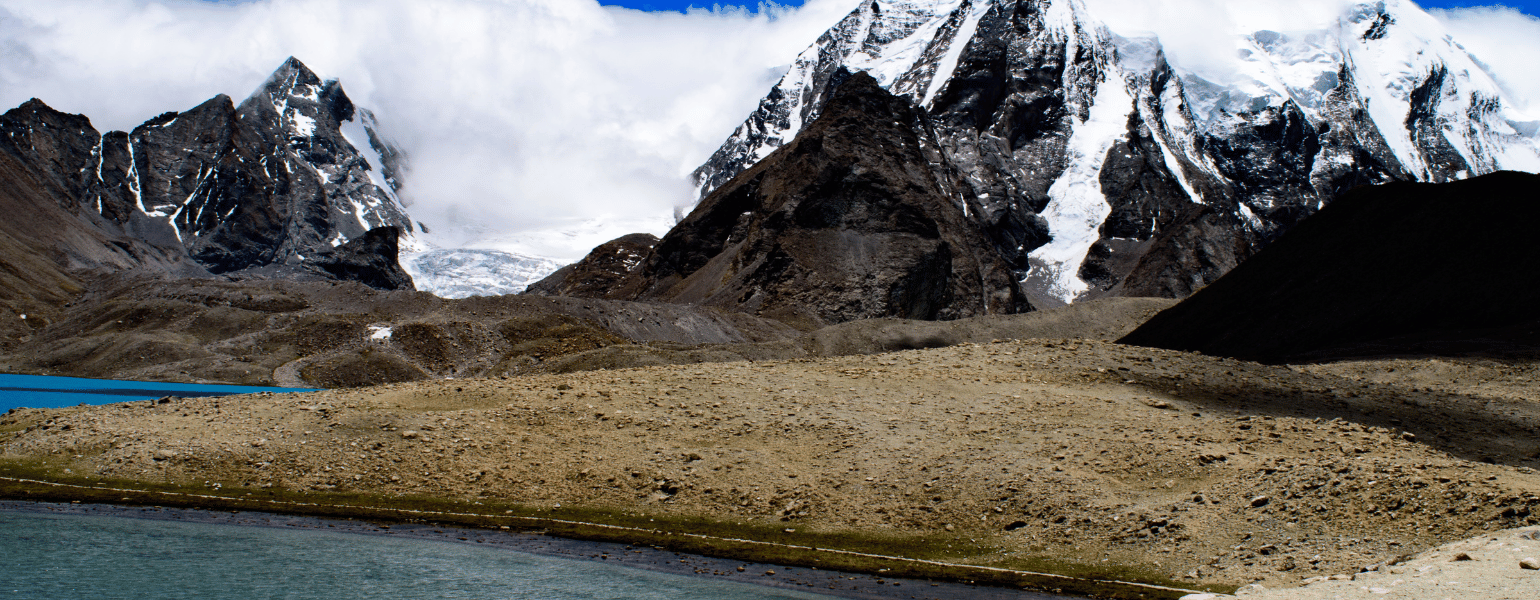
Get Your Best Tour Experience
Customer Speak
Best Seller Package in Sikkim
Place to Visit in Sikkim
Things To Do in Sikkim
Top Attractions in Sikkim
Explore More About Sikkim
- Manali, the princely state of Himachal Pradesh is well connected with most of the neighboring cities like Shimla, Kullu, Delhi, Dehradun, and Mussoorie. Following are the ways by which you can reach Manali.
- By Air: The closest airport to Manali is Bhuntar situated approximately fifty kilometers from the city. Various domestic flights connect Bhuntar with Chandigarh and Delhi. Once on reaching the airport, the traveler can take the prepaid taxi from Manali. Owing to the weather conditions, the most reliable option for getting to Manali is by flight.
- By Bus: Manali is connected to the essential tourist destinations like Leh, Shimla, Dharamshala, Kullu and New Delhi. The journey by bus from Delhi to Manali is five hundred and fifty kilometers. Generally, it is advisable to book tickets via AC Volvo coaches, as the buses are more comfortable than the local ones.
- Road/Self Drive: A car drive to Manali is exuberantly a breathtaking one! The travelers can view scenic glimpses of the valleys and mountains from almost all direction while on a road trip. Though most of the tourist prefer a self-drive to Manali, it is generally advisable to hire a taxi in case the traveler is not comfortable driving its way to the mountainous region.
- Offering distinct charms in all seasons, Manali is a captivating destination. Summers observe Manali turning into an escape from blistering heat plain while winters embellish the town in a graceful turnout of white snow. Have a look at the breakup representing Manali’s climatic conditions:
- September to February: The monsoons stretch to an end in September while winter makes its entry from October. The temperature during winter can go as down to minus one degree Celsius, therefore make sure to carry warm clothes to keep yourself warm in this weather. The time when you can enjoy the spectacular scene and snowfall is in between December to January, making this month span the most cherishable between the honeymooners. This time marks an ideal time for adventure enthusiasts who relish skiing.
Popular destinations in Himachal Pradesh include Shimla, Manali, Dharamshala, Kullu, Spiti Valley, Kasol, McLeod Ganj, Kasauli, and Dalhousie.
The best way to reach Himachal Pradesh is by air to Shimla or Dharamshala, or via road or train routes.
Yes, Himachal Pradesh offers excellent trekking opportunities with diverse trails, beautiful landscapes, and varying difficulty levels for adventurers.
Yes, Himachal Pradesh has direct flights to Kangra Airport and Bhuntar Airport, connecting to major Indian cities like Delhi.
Yes, Himachal Pradesh offers affordable accommodations, local cuisine, and budget-friendly activities, making it a great destination for budget travelers.
Adventurous activities have always been a fancy against which one can challenge and put to test one’s caliber. While we talk about numerous adventure destinations in India, a multitude of names pop up, yet nothing matches the wide variety of adventure activities that are associated with Manali. Therefore, if you are still in the phase to decide upon which adventurous sports to do in Manali, then take a back seat and simply go through the below adventurous activities.
- River Rafting
- Paragliding
- Skiing
- Hiking
- Mountain Biking
- Mountaineering
- Zorbing
- Jeep Safari
- Camping
- River Crossing
- Angling
- Rock Climbing
- Rappelling
- Snow Scooter
- Cable Car Ropeway
- Kayaking

